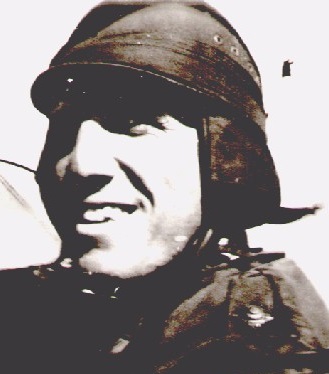 Figure 1. August 1918. The earliest close-up image found of the ‘Cork Aviation Helmet’, taken at the Royal Flying Corps/Royal Air Force, Flying School, Ismailia, Egypt, worn by Second Lieutenant Spaulding. This is the RFC 1917 Pattern, ‘Helmet, Cork Aviation’, externally the main shell is near identical to later versions, with puggaree, four side vents and a typical ‘sun helmet’ ventilation gap between the headband and shell. The outer covering at this time was made-up of four segments of cloth, a front and side seam can just be made out. A large rear brim can be seen shading the neck; however it has a very narrow and thin front peak, at this time these peaks were not part of the cork shell but were attached to the canvas cover. Soon, at least by mid-1919, the design was ‘revised’, adding a complete brim and extending the front peak slightly to help shade the face. After a 1926-27 review the liner and earflap fixings were also modified; it stayed in that configuration up to 1942. The ear-pockets can be seen to be holding large diameter gosport tube earpieces. (Image, see here). Continue reading
Figure 1. August 1918. The earliest close-up image found of the ‘Cork Aviation Helmet’, taken at the Royal Flying Corps/Royal Air Force, Flying School, Ismailia, Egypt, worn by Second Lieutenant Spaulding. This is the RFC 1917 Pattern, ‘Helmet, Cork Aviation’, externally the main shell is near identical to later versions, with puggaree, four side vents and a typical ‘sun helmet’ ventilation gap between the headband and shell. The outer covering at this time was made-up of four segments of cloth, a front and side seam can just be made out. A large rear brim can be seen shading the neck; however it has a very narrow and thin front peak, at this time these peaks were not part of the cork shell but were attached to the canvas cover. Soon, at least by mid-1919, the design was ‘revised’, adding a complete brim and extending the front peak slightly to help shade the face. After a 1926-27 review the liner and earflap fixings were also modified; it stayed in that configuration up to 1942. The ear-pockets can be seen to be holding large diameter gosport tube earpieces. (Image, see here). Continue reading
Category Archives: World War II
The Mystery RAF Helmet ‘Helmet, Aviation’ 22C/12
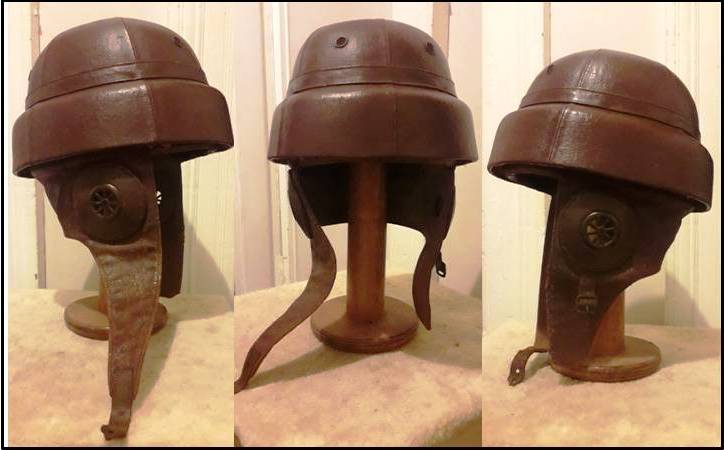 Figure 1. Contemporary documents point to Curtis’s 1916, 2nd patent the ‘Improved “Warren” Safety Helmet’ being the best candidate for the identity of the 1920-1924 RAF listed ‘Helmet, Aviation’ 22C/12. The term ‘Helmets, Aviation’ had been on RFC lists since 1914 and it would seem the term was even then applied to protective helmets of a similar type. The cork structure and the use of vent collets over the ears would imply these helmets were made in the same workshops as sun helmets (images courtesy of Judith Mclay). Continue reading
Figure 1. Contemporary documents point to Curtis’s 1916, 2nd patent the ‘Improved “Warren” Safety Helmet’ being the best candidate for the identity of the 1920-1924 RAF listed ‘Helmet, Aviation’ 22C/12. The term ‘Helmets, Aviation’ had been on RFC lists since 1914 and it would seem the term was even then applied to protective helmets of a similar type. The cork structure and the use of vent collets over the ears would imply these helmets were made in the same workshops as sun helmets (images courtesy of Judith Mclay). Continue reading
The “Steel” Tropical Helmet of the KNIL
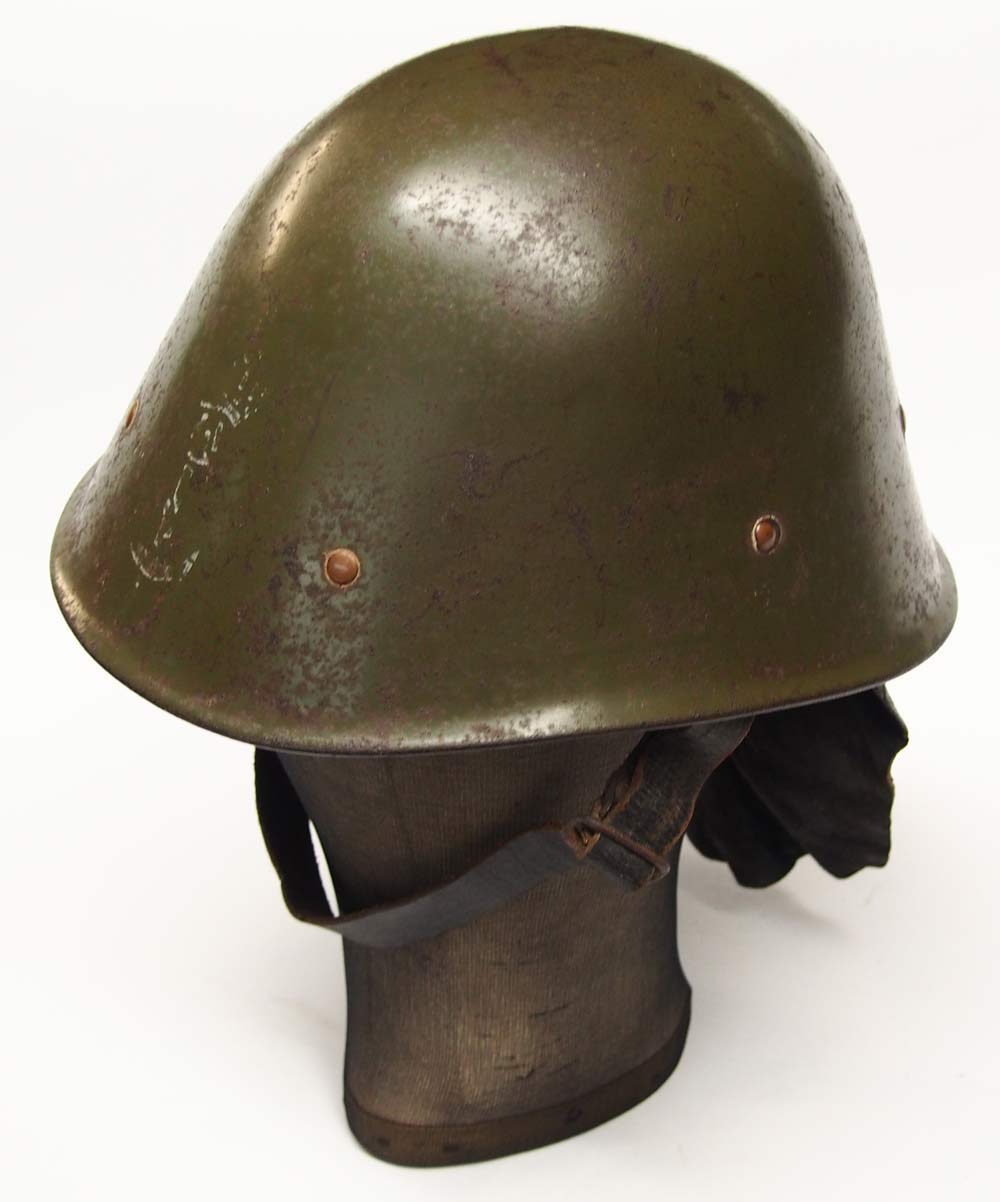 One of the more “unique” tropical helmets of the 20th century was the variation of the Dutch Model 1927 steel helmet. While many steel combat helmets were used in tropical regions during the Second World War, most were the basic helmet simply worn in that theater of operations.
One of the more “unique” tropical helmets of the 20th century was the variation of the Dutch Model 1927 steel helmet. While many steel combat helmets were used in tropical regions during the Second World War, most were the basic helmet simply worn in that theater of operations.
However, the steel combat helmets used by the Royal Netherlands East Indies Army or Koninklijk Nederlands Indisch Leger (KNIL) were actually developed and produced specifically for use by that military force. Instead of issuing the KNIL with the newly adopted Model 1927 helmet, which was used by the Dutch military in the Netherlands the Dutch Minister of War called the development of a modified version.
Indian Medical Services Named Wolseley
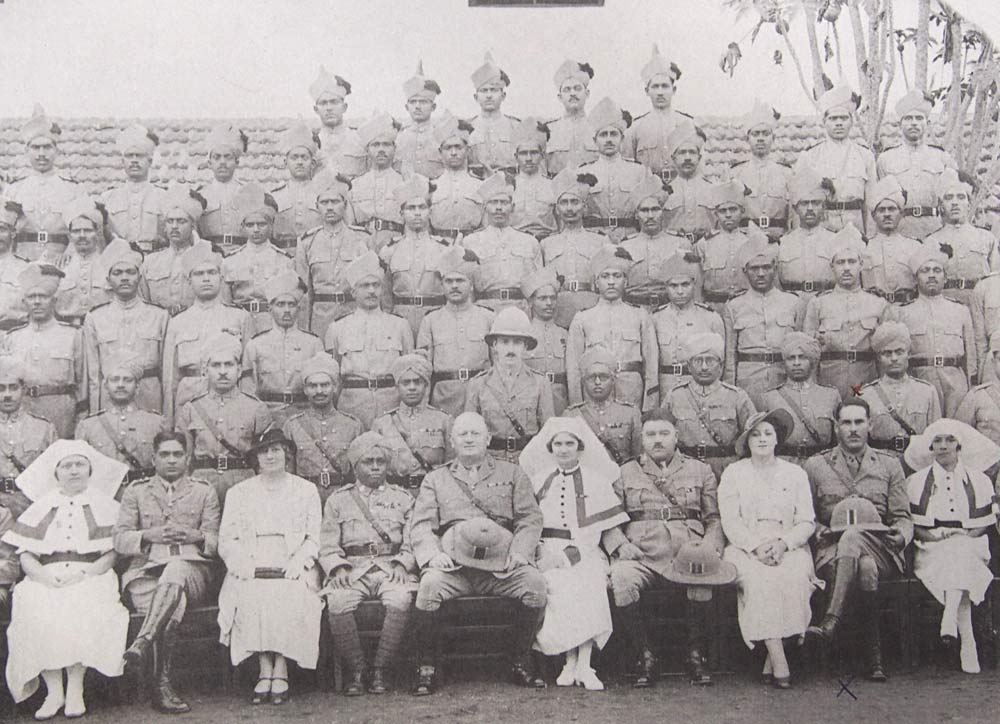 While not a “fighting unit” in the traditional sense, the Indian Medical Service (IMS) was a military medical service in British India. Many of its officers, who were both British and Indian, served in civilian hospitals and the unit saw service in both World Wars – with many of its doctors heading to the front lines with the Indian Army. Continue reading
While not a “fighting unit” in the traditional sense, the Indian Medical Service (IMS) was a military medical service in British India. Many of its officers, who were both British and Indian, served in civilian hospitals and the unit saw service in both World Wars – with many of its doctors heading to the front lines with the Indian Army. Continue reading
A Cork Indian/Aden Pattern Helmet
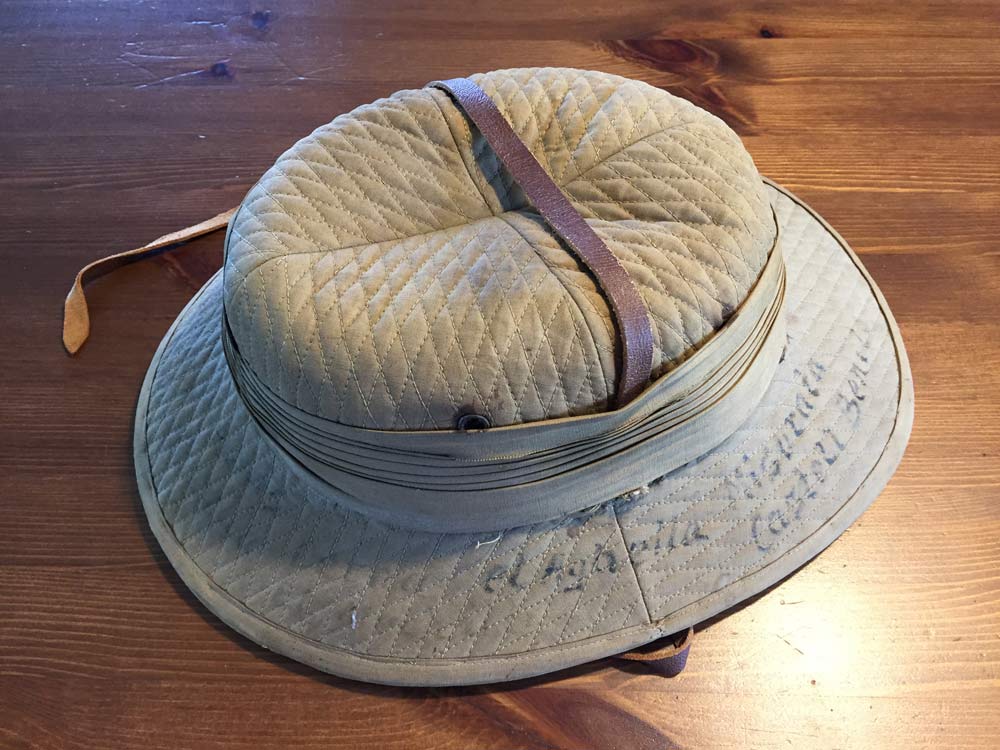
While the term “pith helmet” is used to describe almost all sun helmets, the actual use of “sola pith” material is generally only seen in the construction of helmets made in Asia, including India and the Far East. One of the more popular – and high end – examples of Indian-made sun helmets is the “Cawnpore Tent Club Helmet,” which is noted for its shape and more importantly the quilted linen covering.
All of the examples encountered to date have been made of pith, but recently one has been discovered at a flea market in Munich, Germany, and this example was made of cork. Continue reading
A Second Pressed Fiber Wolseley
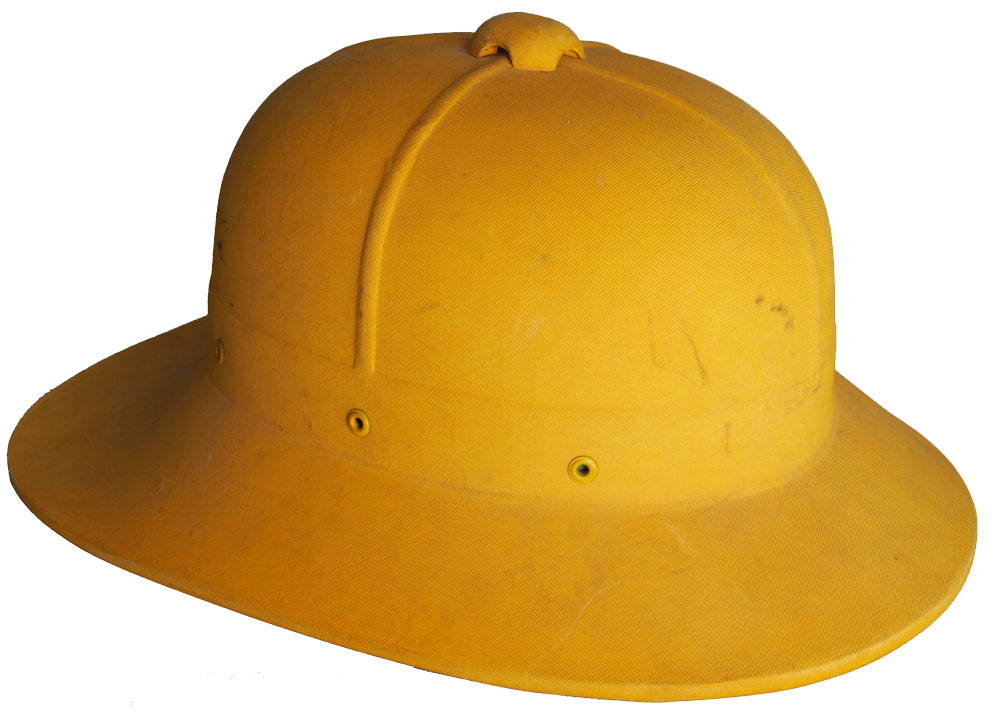
It is odd how when one item suddenly is found another shows up! It could be that some things are more common than we realize and didn’t notice previously, or perhaps multiple items were uncovered at the same time. In this case it is the Canadian pressed fiber naval style Wolseley.
The Pressed Fiber Forming Buck
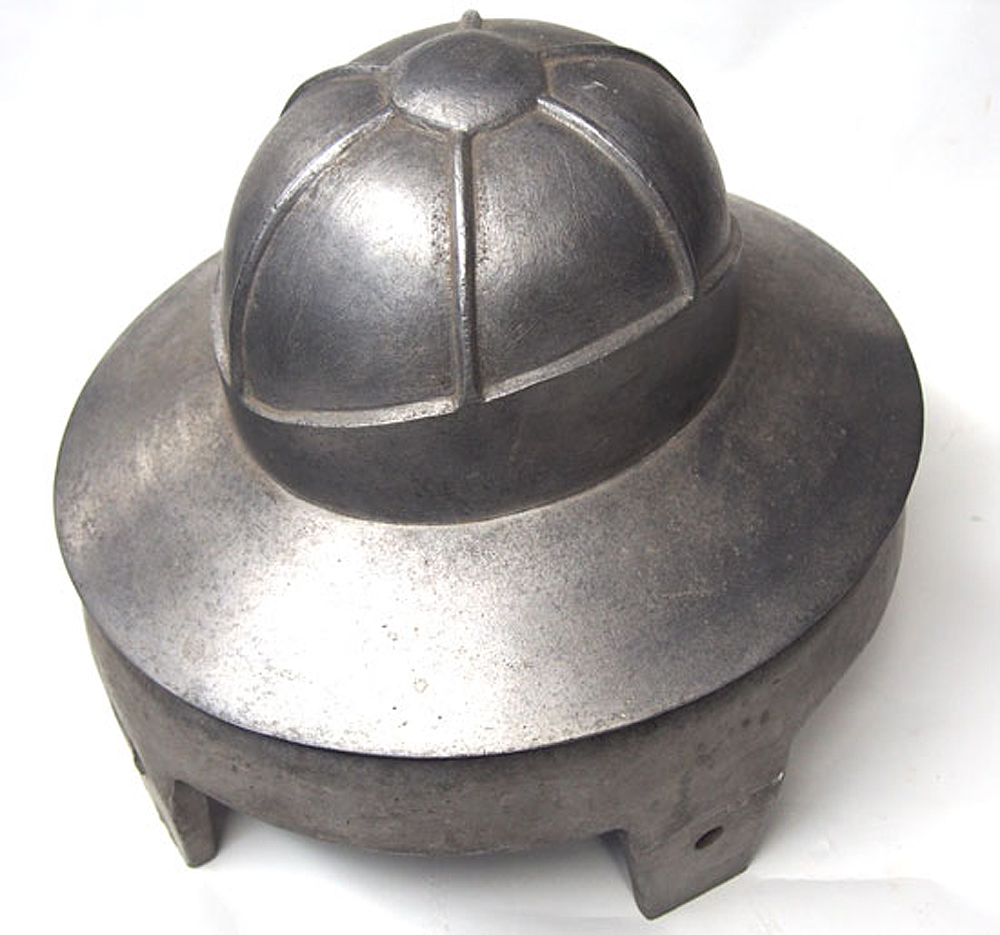 In the summer of 2017 a unique item (above) showed up at auction and this reporter was fortunate to obtain it – it appeared to be a press or form for the American pressed fiber sun helmet. Recently a reader explained to me exactly how this item was used, and now it confirms that this was in fact used by Hawley Products Company, the maker of the pressed fiber helmets. Continue reading
In the summer of 2017 a unique item (above) showed up at auction and this reporter was fortunate to obtain it – it appeared to be a press or form for the American pressed fiber sun helmet. Recently a reader explained to me exactly how this item was used, and now it confirms that this was in fact used by Hawley Products Company, the maker of the pressed fiber helmets. Continue reading
